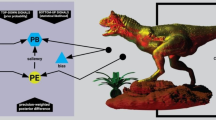Abstract
A semiotic theory of systems derived from language would have the purpose of classifying all the systems of linguistic expression: philosophy, ideology, myth, poetry, art, as much as the dream, lapsus, and free association in a pluridimensional matrix that will interact with many diversified fields. In each one of these discourses it is necessary to consider a plurality of questions, the essence of which will only be comprehensible by the totality; it will be necessary to ask, in the first place, what will be the purpose of this language, what function does it fulfill and for which reason has it been constructed. The concept of World vision (WV) is introduced and its relation with Generalized Collective Conscience (GCC) and Particularized Collective Conscience. Culture implies a particular WV. Culture creates GCC. The semantic field is a structure that formalizes the units of a certain culture constituting a portion of the vision of the Reality that owns this culture. An ecological case is explained.




Similar content being viewed by others
References
Agazzi, E. (1992). Some philosophical implications of Gödel’S theorem. In Miévill, D. (Ed.), Kurt Gödel actes du colloque, Neuchâtel, 13–14 juin 1991 (pp. 129–159). Travaux de Logique, N. 7.
Austin, J. L. (1961). The Meaning of a Word. In Philosophical papers. Oxford: Clarendon Press.
Borhek, J. T., & Curtis, R. F. (1983). Belief systems in human society. In R. E. Krieger (Ed.), A sociology of belief. Malabar, Florida: Publishing Company.
Chomsky, N. (1962). Current issues in linguistic theory. Cambridge: Ninth International Congress of Linguistic.
Durkheim, E. (1947). The division of labor in society. New York: The Free Press.
Durkheim, E. (1965). The elementary forms of the religious life. New York: The Free Press.
Eco, U. (1968). La struttura assente. Casa Editrice Valentino Bompiani & C.S.p.A. (in Italian).
Ferreras, J. I. (1980). Fundamentos de Sociología de la Literatura. Ediciones Cátedra, SA. Madrid. (in Spanish).
Frege, G. (1892). Über Sinn und Bedeuntun. Zeitschrift für Philosophie un Philosophische Kritik, 100. (in German).
Lyons, J. (1968). Introduction to theoretical linguistics. Cambridge: University Press.
Manis, J. C., & Meltzer, B. N. (Eds.). (1972). Symbolic interaction: A reader in social psychology. Boston: Allyn & Bacon, Inc.
Marx, K., & Engels, F. (1976). The German ideology. Moscow: Progress Publishers. [C. 1845].
Meinong, A. (1960). Über Gegenstandtheorie. Leipzig: J.A. Barth [1904]. (in German).
Ogburn, W. F. (1950). Social change (Revised ed.). New York: The Viking Press, Inc.
Osgood, C., Succi, G. J., & Tannebaum, P. H. (1957). The measurement of meaning. Urbana: University of Illinois Press.
Peirce, C. S. (1931–1958). In C. Hartshorne, P. Weiss y, & A. W. Burks (Eds.). Collected papers of Charles Sanders Peirce, (vols. 1–8). Cambridge, MA: Harvard University Press.
Quine, W. V. O. (1953). From a logical point of view. Cambridge: Harvard University Press.
Shannon, C. E., & Weaver, V. (1949). The mathematical theory of information. Urbana: University of Illinois Press.
Sapir, E. (1921). Language. New York: Harcourt Brace.
Sastre-Vazquez, P., Usó-Domènech, J. L., Villacampa, Y., Mateu, J., & Salvador, P. (1999). Statistical linguistic laws in ecological models. Cybernetics and Systems: An International Journal, 30(8), 697–724.
Stevenson, C. L. (1944). Ethics and language. New Haven: Yale University Press.
Usó-Domènech, J. L., & Villacampa, Y. (2001). Semantics of complex structural systems: Presentation and representation. A synchronic vision of language L(MT). International Journal of General Systems, 30(4), 479–501.
Usó-Domènech, J. L., Stübing, G., López Vila, J., & Sastre Vázquez, P. (2002). Comportamiento De Arbustos Pirófitos en el Paraje Natural Desert de les Palmes. (Prologue by B. C. Patten) Edita Fundación Dávalos-Fletcher. Castellón de la Plana. (in Spanish).
Usó-Domènech, J. L., & Mateu, J. (2004). TeoríA Del Medio Ambiente: Modelización. Publicaciones de la Universitat Jaume I. Colección Medio Ambiente (Vol. 3). (in Spanish).
Usó-Domènech, J. L., Vives-Maciá, F., Nescolarde Selva, J., & Patten, B. C. (2009). A Walford ’S metadynamic point of view of ecosustainability ideology (II). INTERSYMP.
Usó-Doménech, J. L., & Nescolarde-Selva, J. (2012). Mathematic and semiotic theory of ideological systems. Sarrebruck, Germany: Editorial LAP.
Villacampa, Y., Usó-Domènech, J. L., Mateu, J., Vives, F., & Sastre, P. (1999). Generative and recognoscitive grammars in ecological models. Ecological Modelling, 117, 315–332.
Villacampa-Esteve, Y., & Usó-Domènech, J. L. (1999). A text theory of ecological models. Cybernetics and Systems: An International Journal, 30(7), 587–607.
Vives-Macia, F. (1999). Sintaxis y codificación en modelos de sistemas complejos. Doctoral thesis: University Of Alicante.
White, M. (1950). The analytic and the synthetic: An untenable dualism. In S. Hook (Ed.), John Dewey. New York: Dial Press.
Whorf, B. L. (1956). A central Mexican inscription combining Mexican and Maya day signs. In J. B. Carroll (Ed.), Language, thought and reality. Cambridge: MIT Press.
Wilber, K. (1977). The spectrum of consciousness. 20th anniversary Edn. Quest Books. 1993.
Author information
Authors and Affiliations
Corresponding author
Rights and permissions
About this article
Cite this article
Nescolarde-Selva, J.A., Usó-Doménech, JL. Semiotic Vision of Ideologies. Found Sci 19, 263–282 (2014). https://doi.org/10.1007/s10699-013-9329-8
Published:
Issue Date:
DOI: https://doi.org/10.1007/s10699-013-9329-8




